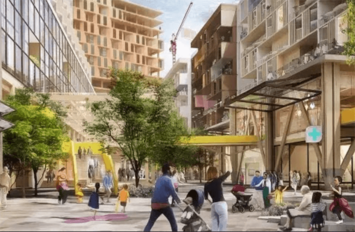
Frequent readers here may have seen me write about my experience growing up in 1970s Detroit. I’ve often said that seeking ways to improve the city and not abandon it, is what propelled me into a career in urban planning. I wanted to be a change agent for cities. Today, more than thirty years into my career, I’m proud of the stature cities have gained over that time; I’m proud of my contribution to it. However, I feel as if cities have risen in prominence in spite of the efforts of planners, not because of them.
When I finished grad school in 1990, there were two things I generally believed about urban planning and its role in saving cities. First, I believed that urban planning was the primary professional vehicle for creating change in cities, at least the change I was looking for. Planners were thoughtful, introspective advisers to elected officials who devised policies to make cities better places. Planners were the ones who knew the inner workings of cities and sought to maximize their unique strengths to make them stronger and more equitable places.
Second, I believed that the practice of true urban planning policy innovation and development happened in the private sector. I believed there was a symbiotic relationship between the private and public sector by which private planning consultants would independently develop ideas, and later get hired by local governments to implement the ideas as new urban planning policies. I viewed public sector planners as limited in their ability to push innovative policies forward because planners had a broad time horizon to consider (comprehensive plans look 20-25 years into the future!). Elected officials and the voting public have much shorter time horizons – the election cycle or just day-to-day living – and couldn’t always be concerned with broader, expansive policies that didn’t promise immediate impacts.
I crafted my career plan with those principles in mind. I would start my career in local government so I could learn the ins and outs of planning policymaking (I started at the City of Chicago). I’d eventually transition into the private sector and pursue a “best practices” approach to what I’d learned at the local level (I stopped at a handful of private consulting firms, most prominently Camiros, Ltd.). Then I’d ultimately start my own consulting practice and promote my own brand of effective planning policymaking. In other words, I viewed urban planning as the research and development arm of city-building.
I’d view that as an immature take on urban planning today. And it’s a take I held onto for far too long.
Honestly, the 1990 version of me could be forgiven for making that assumption. New Urbanism had burst onto the scene over the previous decade, spurred by the traditional development of the master-planned town of Seaside, Florida by Andres Duany and Elizabeth Plater-Zyberk. Duany and Plater-Zyberk had tapped into a longing for the pedestrian-oriented development patterns that preceded the auto-based sprawl patterns that we’d become accustomed to – tethered to – over the previous 50 years. I saw what they were doing as growing into a broader movement, and it did. The Congress for the New Urbanism formed in 1993, as a collection of architects, urban designers, landscape architects, engineers and yes, planners, committed to pursuing and promoting traditional, people-scaled development patterns in their work.
I also saw what they were doing as having real implications for places that were already built in that fashion, namely cities. I thought New Urbanists would soon partner with large cities to promote the traditional neighborhood development patterns already at work, and seek ways to build on their foundation. I thought New Urbanism would usher in a new era for cities. But that didn’t exactly happen.
Read the rest of this piece at Corner Side Yard Blog.
Pete Saunders is a writer and researcher whose work focuses on urbanism and public policy. Pete has been the editor/publisher of the Corner Side Yard, an urbanist blog, since 2012. Pete is also an urban affairs contributor to Forbes Magazine’s online platform. Pete’s writings have been published widely in traditional and internet media outlets, including the feature article in the December 2018 issue of Planning Magazine. Pete has more than twenty years’ experience in planning, economic development, and community development, with stops in the public, private and non-profit sectors. He lives in Chicago.
Photo: One of many versions of our urban future. Source: bdcnetwork.com












